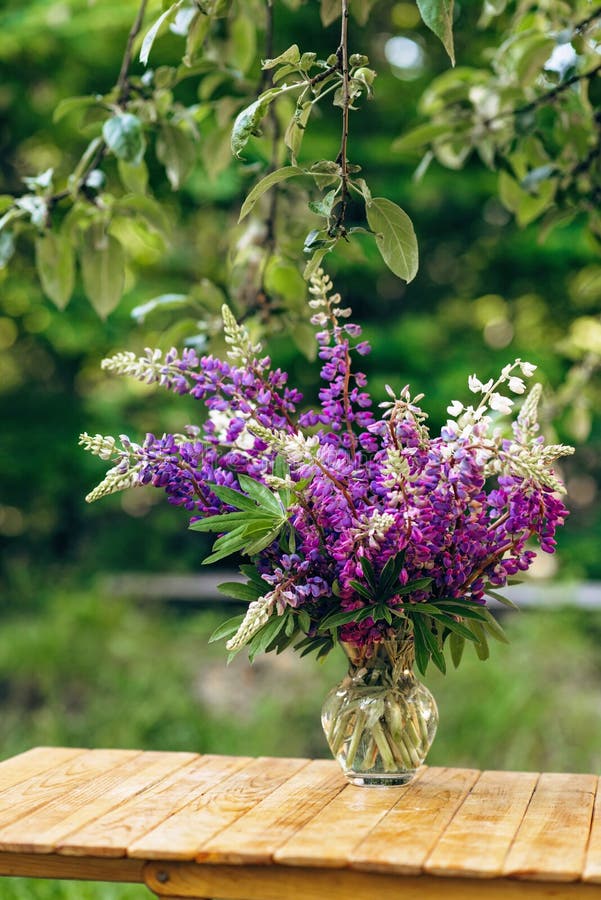If you dream of a garden filled with tall, colorful blooms that attract butterflies and bees, lupines are the perfect choice! These stunning, spiky flowers — known for their vibrant colors ranging from deep purple and pink to soft yellow and white — can transform any garden into a lively, cottage-style paradise.In this guide, you’ll learn the simple tricks to lupine flowers successfully, from planting and soil prep to watering and care. Whether you’re a beginner or a seasoned gardener, these tips will help you grow strong, healthy lupine plants that bloom beautifully year after year. 🌿🌼 What Are Lupine Flowers?Lupines (genus Lupinus) are perennial or annual flowering plants that belong to the pea family. They’re native to North America and Europe, loved for their tall flower spikes and lush foliage.These flowers not only look beautiful but also improve soil fertility by fixing nitrogen — meaning they naturally enrich the soil for other plants nearby.Common types of lupines include:🌸 Russell Hybrids – Available in a wide range of bright colors.💜 Wild Lupine (Lupinus perennis) – Native to North America, ideal for wildlife gardens.🌼 Tree Lupine (Lupinus arboreus) – A shrubby type with fragrant yellow flowers.🌱 Step-by-Step: How to Plant Lupine Flowers SuccessfullyLet’s break down the simple tricks to lupine flowers successfully so your garden thrives with color and life!Step 1: Choose the Right LocationLupines love sunny spots with well-draining soil. They prefer cooler climates but can tolerate light heat if kept moist.✅ Best light: Full sun (at least 6 hours daily).✅ Avoid: Waterlogged or clay-heavy soil — they dislike soggy roots.Pro Tip: Lupines grow best in slightly acidic soil (pH 6–6.5). Add compost or peat moss to improve drainage and acidity.Step 2: Prepare the SoilLupines don’t need rich soil, but they do love loose, well-aerated soil.Mix in some organic compost to boost nutrients.Avoid too much fertilizer — it can lead to leafy growth but fewer blooms.Rake the soil smooth before planting.Step 3: Planting Lupine Seeds or TransplantsYou can start lupines either from seeds or young plants:🌱 From Seeds:Scarify the seeds (rub lightly with sandpaper) to help germination.Soak them in warm water for 12–24 hours before planting.Sow directly into the garden in spring or fall, about ¼ inch deep.🌿 From Transplants:Gently plant them in prepared soil, keeping the root ball intact.Space plants 12–18 inches apart to allow room for growth.Lupines have deep taproots, so avoid disturbing them once planted.Step 4: Watering & FeedingKeep the soil evenly moist — especially while seeds germinate and young plants establish.💧 Watering tips:Water once or twice a week, depending on rainfall.Don’t overwater; let the top inch of soil dry out between waterings.🍃 Feeding:Lupines don’t need much fertilizer. A light feed with compost tea or fish emulsion during early growth is enough.Step 5: Support & PruningLupines can grow tall (up to 3–4 feet), so they sometimes need gentle support.Use a garden stake or plant them near other tall flowers for natural support.Deadhead spent blooms (remove faded flowers) to encourage more flowering and prevent self-seeding.When the blooming season ends, cut back the flower spikes to promote new leaf growth and maintain tidy plants.🌸 Caring for Lupines Year-RoundHere are more simple tricks to keep lupine flowers thriving season after season:🌿 Spring:Watch for slugs and aphids; they love new lupine shoots.Mulch lightly to retain moisture and keep weeds away.🌞 Summer:Keep watering during dry spells.Remove faded flower stalks to extend the bloom time.🍂 Autumn:Let the foliage die back naturally; it feeds the soil.Collect seeds if you want to replant or share with friends.❄️ Winter:In cold regions, add a layer of mulch to protect roots.Lupines usually regrow beautifully in spring!🌼 Common Problems (and Easy Fixes)Even though lupines are low-maintenance, they can face a few challenges:🚫 Problem: Yellowing leaves or stunted growth✅ Fix: Check drainage — roots might be too wet. Improve soil aeration.🐛 Problem: Aphids or slugs✅ Fix: Spray with neem oil or use natural slug traps (like beer traps).🍃 Problem: No blooms✅ Fix: Too much nitrogen or shade. Move to a sunnier spot and avoid heavy fertilization.🌺 Companion Plants for LupinesLupines look stunning when paired with other flowering plants. Try growing them alongside:Shasta daisies 🌼Poppies 🌺Delphiniums 💙Foxgloves 💜Coreopsis 💛These combinations add layers of color and attract bees, butterflies, and hummingbirds!🌱 Propagating LupinesWant more of these beauties for free? Here’s how:Collect seeds after pods dry and turn brown.Store them in a cool, dry place.Sow them in early spring or fall for best results.Alternatively, you can divide lupines every 3–4 years, but be careful — their taproots are delicate!💡 Bonus Tips for Gorgeous Blooms🌸 Don’t overcrowd. Give plants room to breathe.🌸 Add mulch. Keeps roots cool and retains moisture.🌸 Encourage reseeding. Let some pods mature naturally.🌸 Rotate planting areas. Prevent soil fatigue and pests.With just these simple tricks to lupine flowers successfully, you’ll enjoy lush, colorful spikes season after season. 🌈ConclusionGrowing lupine flowers is easier than you might think! With the right sunlight, well-draining soil, and a little love, you can enjoy breathtaking blooms that light up your garden and attract pollinators all summer long.Remember — the secret to lupine flowers successfully lies in balance: not too much water, not too rich soil, and plenty of sunshine. Follow these easy steps, and soon your garden will burst with the beauty and charm of lupines in full bloom! 🌿💐

